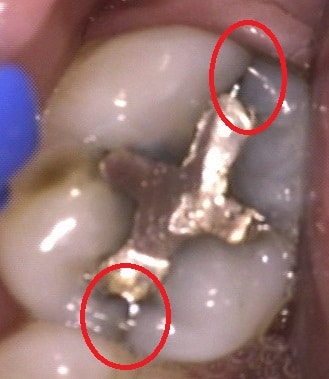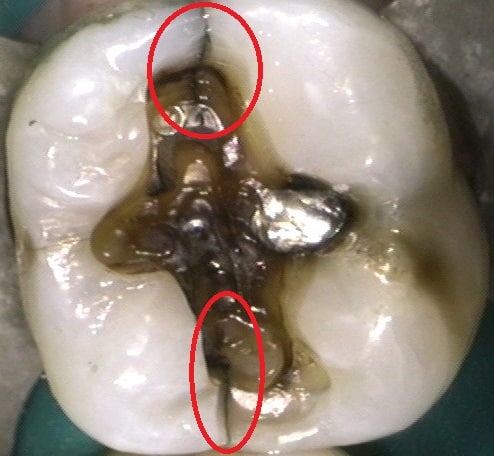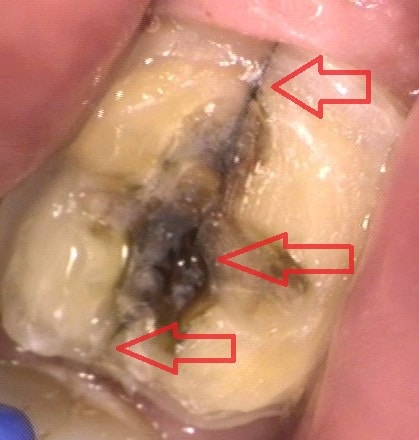The majority of people we see are unaware that amalgam (silver) fillings release mercury, one of the most poisonous substances we are ever exposed to. Luckily, here in the Boulder/Denver area we find that people are generally more health and body conscious than other parts of the country. This leads to numerous questions and phone calls regarding the effects of mercury fillings on your teeth, how to remove them safely, and the effects to your overall health. Today I want to discuss the effects that mercury fillings have on your teeth. I will cover how to remove them safely and the effects to overall health in another blog.
Amalgam fillings are made from mercury, silver, tin and copper. The mercury is what binds all of these metals together. The downfall of mercury (other than extreme toxicity) is that it expands and contracts when you eat hot and cold foods- just like the mercury in a thermometer. The result of this expansion and contraction is often times a cracked tooth.
The picture on the right is of the same tooth, with the mercury removed. You can see the darkness inside of the tooth as it is stained from the amalgam filling. There was also decay, but it is very hard to see as the tooth structure is so dark. 
This last photo is of the tooth after it has been prepared for a crown and all of the mercury is removed. You can see how the crack extends across the whole tooth. This is what causes so many people pain. Once this tooth was crowned, our guest no longer had symptoms of pressure sensitivity when chewing. We consider this a success story even though we had to crown the tooth. Some people are not so lucky. If the crack extends into the nerve, it will likely need a root canal or, worst case scenario, extracted. This is one of the main reasons why we remove this type of filling on a regular basis. Some people choose to have them removed due to health concerns as well. I will talk about that in more detail in my next posting. Until then, if you have mercury fillings in your mouth be careful with the hot apple pie and ice cream! 

